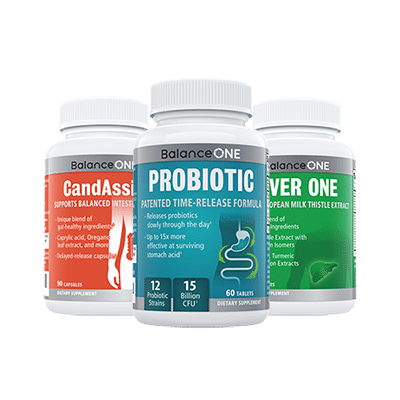Xylitol: A Natural Sweetener

When it comes to the Candida diet, not all carbohydrates are created equal. You have probably read all about carbohydrates like glucose, sucrose and other sugars that can feed your Candida and lead to a nasty overgrowth.
Well there is one sugar alcohol that is safe for use on the Candida diet. Its name is Xylitol, and it is a natural compound that is found in berries, mushrooms, sugar cane and other fruits and vegetables.
Xylitol contains far less carbohydrates than table sugar and is around 50% less sweet. It also has a significantly lower glycemic rating, which means that it metabolizes more slowly in your body. It is often used by diabetics to help maintain stable blood sugar levels.
As part of your Candida diet, it will restrict the amount of sugar that the Candida cells in your gut require to grow. Together with probiotics and antifungals, Xylitol can be a useful addition to your Candida diet.
Table Of Contents
Why is Xylitol different from other sugars?
Xylitol is a sugar alcohol – two words that would ordinarily raise a red flag for Candida dieters. However Xylitol is different. Its low glycemic index and low carbohydrate content mean that it is unlikely to feed your Candida yeast, and sugar alcohols like Xylitol are not fully broken down during digestion. As part of a strict anti-Candida diet, it will help to regulate your blood sugar and allow your probiotics and antifungals to kill the Candida yeast. Longer term, Xylitol is a much healthier alternative to ordinary sugar.
One of the keys to beating your Candida is finding a sustainable diet plan, and for many Candida dieters that means finding a natural sweetener to replace the sugar they use in their herbal tea or chicory coffee every day. Xylitol can be used as part of your Candida diet to replace these other sugars. According to a 2005 study (read here), “A limited intake of these carbohydrates by substituting xylitol could be of value in the management of oral candidosis”.
Another study in 2011 (see here) found that Xylitol restricts the production of acetaldehyde, one of the main byproducts of Candida. So using Xylitol as your sweetener may even reduce your Candida symptoms or lessen the chance of Candida Die-Off.
Here are a few reasons why you should make Xylitol a part of your Candida diet plan:
- Low Glycemic Index
- A teaspoon of Xylitol contains 9 calories, vs. 16 calories for normal sugar
- Xylitol contains far fewer carbohydrates than normal sugar
- It is a 100% natural sweetener
- Xylitol does not have unpleasant long-term side effects like Aspartame-based sweeteners
- It can restrict the production of acetaldehyde, one of Candida’s main byproducts
Which Xylitol product should you buy?
You can buy Xylitol online or in your local health food store. It comes in a powder form and does not need any special storage. Be sure to get as pure a form of Xylitol as you can find, like this one. Some Xylitol brands have other chemicals added that may worsen your Candida overgrowth.
Xylitol can also be found in many products like chewing gum, toothpaste and mouthwash. You can chew Xylitol gum and mints if you are having bad breath issues. Xylitol has actually been shown to fight cavity-causing bacteria and oral Candidiasis. Just make sure you are using pure Xylitol products as some chewing gums and mints do contain other harmful chemicals.
Will Xylitol work on your Candida diet?
Xylitol is a sugar alcohol, so if you have a severe Candida outbreak there is a slight chance that it may feed your Candida. This is unlikely as Xylitol’s glycemic index is so low and the sugar alcohol is only partially broken down in your gut. However Xylitol could cause reactions in some Candida dieters. So if you are at all worried, try using Stevia to sweeten your foods instead.
How much Xylitol do you need?
Xylitol is only 50% as sweet as sugar, so you will need to use a good amount to sweeten your food or drink. Compare this to the other natural sweetener that we recommend, Stevia, which is so sweet that you only need to use a tiny amount.
A good discipline to work on during your Candida treatment is to try to curb your sweet tooth. So why not try to use the same amount of Xylitol as you would use sugar, and take a step towards reducing your dependency on sweet foods. As part of your longer term diet plan this will really cut the chances of your Candida overgrowth returning.
If you’re looking for more detail on how to plan and prepare meals during your Candida diet, check out my Ultimate Candida Diet treatment program.
Warning to dog-owners!
If you own a dog and are planning to use Xylitol as a part of your Candida treatment plan, there is one very important thing that you should know. Xylitol is extremely toxic to dogs, potentially even fatal in some cases, so be extremely careful to store your Xylitol products well out of your dog’s reach! If your dog accidentally ingests some, call your vet immediately.

